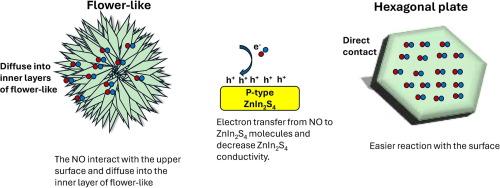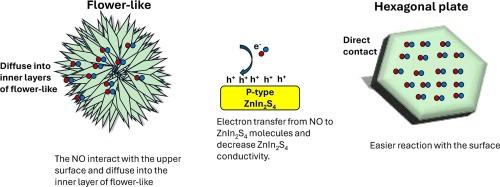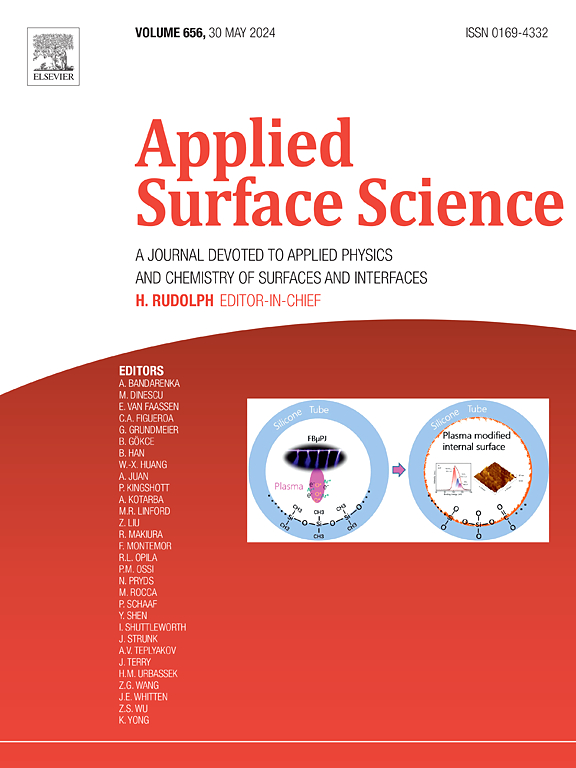通过超临界水热合成对 ZnIn2S4 进行表面刻面工程处理以增强氮氧化物气体传感性能
IF 6.9
2区 材料科学
Q2 CHEMISTRY, PHYSICAL
引用次数: 0
摘要
在本研究中,我们研究了在超临界水环境中通过晶体生长控制精确调节 ZnIn2S4 表面刻面,将其用作 NO 气体检测装置的新应用。在基底面(003)表面刻面优先生长的驱动下,超临界水热合成成功地将 ZnIn2S4 从花朵状结构转变为六边形板状形态。随着温度的升高,(003)/(011) 面的比率从 0.52 大幅增加到 1.98,这证明了在亚临界环境中无法实现的形态控制。氮氧化物检测结果表明,与花朵状形态相比,这种表面形态的改变增强了 ZnIn2S4 表面与氮氧化物气体之间的相互作用,并减少了扩散限制,从而大大加快了传感器的响应速度。六边形板的响应时间非常快,约为 25 秒,而花朵状板的响应时间为 181 秒。这些发现强调了表面刻面工程在优化 ZnIn2S4 气体传感特性方面的关键作用,凸显了其在先进气体传感器应用方面的潜力。本文章由计算机程序翻译,如有差异,请以英文原文为准。


Surface facet engineering of ZnIn2S4 via supercritical hydrothermal synthesis for enhanced NO gas sensing performance
In this study, we investigate the novel application of ZnIn2S4 as an NO gas detection device by precisely modulating its surface facets through crystal growth control in a supercritical water environment. The supercritical hydrothermal synthesis successfully transforms ZnIn2S4 from a flower-like structure into a hexagonal plate morphology, driven by the preferential growth of the basal plane (003) surface facet. This morphological control, which is unattainable in a subcritical environment, is evidenced by a substantial increase in the (003)/(011) facet ratio from 0.52 to 1.98 with rising temperature. NO detection results indicate that this surface morphology modification significantly accelerates sensor response, attributed to enhanced interaction between the ZnIn2S4 surface and NO gas, as well as reduced diffusion limitations compared to the flower-like morphology. The hexagonal plates exhibit a remarkably fast response time of approximately 25 s, in contrast to 181 s for the flower-like counterpart. These findings underscore the crucial role of surface facet engineering in optimizing the gas-sensing properties of ZnIn2S4, highlighting its potential for advanced gas sensor applications.
求助全文
通过发布文献求助,成功后即可免费获取论文全文。
去求助
来源期刊

Applied Surface Science
工程技术-材料科学:膜
CiteScore
12.50
自引率
7.50%
发文量
3393
审稿时长
67 days
期刊介绍:
Applied Surface Science covers topics contributing to a better understanding of surfaces, interfaces, nanostructures and their applications. The journal is concerned with scientific research on the atomic and molecular level of material properties determined with specific surface analytical techniques and/or computational methods, as well as the processing of such structures.
 求助内容:
求助内容: 应助结果提醒方式:
应助结果提醒方式:


